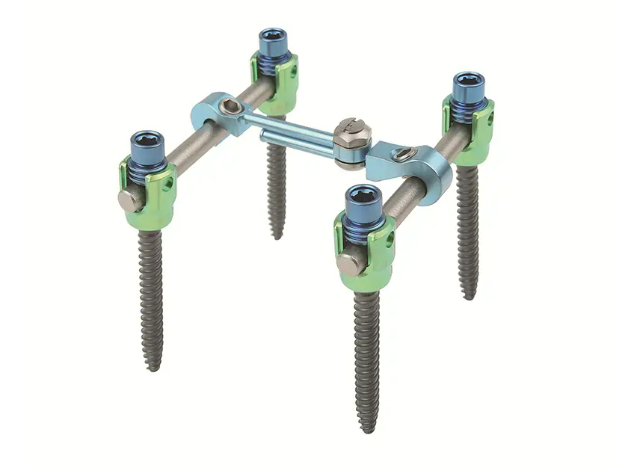Interlaminar spinal fixation systems represent a significant advancement in spinal surgery, specifically designed to enhance stability and support in the interlaminar space of the spine. These systems are crucial for treating various spinal disorders, including degenerative disc disease, spinal stenosis, and trauma. By providing targeted stabilization, interlaminar spinal fixation systems enable surgeons to achieve better outcomes in complex procedures.
The Role of Spinal Fixation Systems in Surgery
Spinal fixation systems are integral to modern spine surgery, offering a range of solutions tailored to the unique anatomical challenges posed by each patient’s condition. Interlaminar spinal fixation systems are a specialized subset that focuses on the interlaminar region, allowing for less invasive approaches and reduced recovery times. These systems typically involve the use of screws, rods, and plates that are precisely engineered to support spinal structures during the healing process.
By utilizing a spinal fixation system, surgeons can achieve improved alignment and stability, which are critical for successful rehabilitation. The modular design of these systems allows for customization based on the specific needs of each patient, enhancing the versatility and effectiveness of surgical interventions. The advancements in materials and engineering have further refined the reliability and performance of spinal fixation systems, ensuring that they can withstand the demands of spinal mechanics.
Benefits of Modular Design in Spinal Fixation
Modular spinal fixation systems, such as the next-generation Premier System Combination, exemplify the innovation within this field. The modularity of these systems allows spine surgeons to adapt their approach to complex procedures, ensuring the right components are used for each unique case. This flexibility is essential in navigating the intricate anatomy of the spine and addressing the specific needs of patients.
The incorporation of advanced imaging techniques and preoperative planning tools further enhances the effectiveness of interlaminar spinal fixation systems. Surgeons can now visualize the spine in three dimensions, allowing for precise placement of fixation devices. This not only increases the safety of the procedures but also improves postoperative outcomes, reducing the likelihood of complications associated with spinal surgery.
In addition, the use of interlaminar spinal fixation systems can lead to shorter surgical times, which is beneficial for both healthcare providers and patients. By minimizing the invasiveness of the procedure, these systems contribute to quicker recovery and less postoperative pain, facilitating a more efficient healing process.
Advancements in Spinal Surgery Technology
As the field of spinal surgery continues to evolve, interlaminar spinal fixation systems play a pivotal role in enhancing surgical techniques and patient outcomes. The integration of innovative designs and modular components into spinal fixation systems not only addresses the complexities of spinal disorders but also sets the stage for future advancements in surgical practices.
In conclusion, businesses involved in the healthcare and medical device sectors should consider the implications of interlaminar spinal fixation systems in their offerings. Companies like WEGO Medical are leading the charge in developing these advanced spinal fixation systems, ensuring that surgeons have access to the most effective tools for improving patient care. Emphasizing the importance of these systems can help businesses align with the ongoing advancements in spinal surgery technology.
